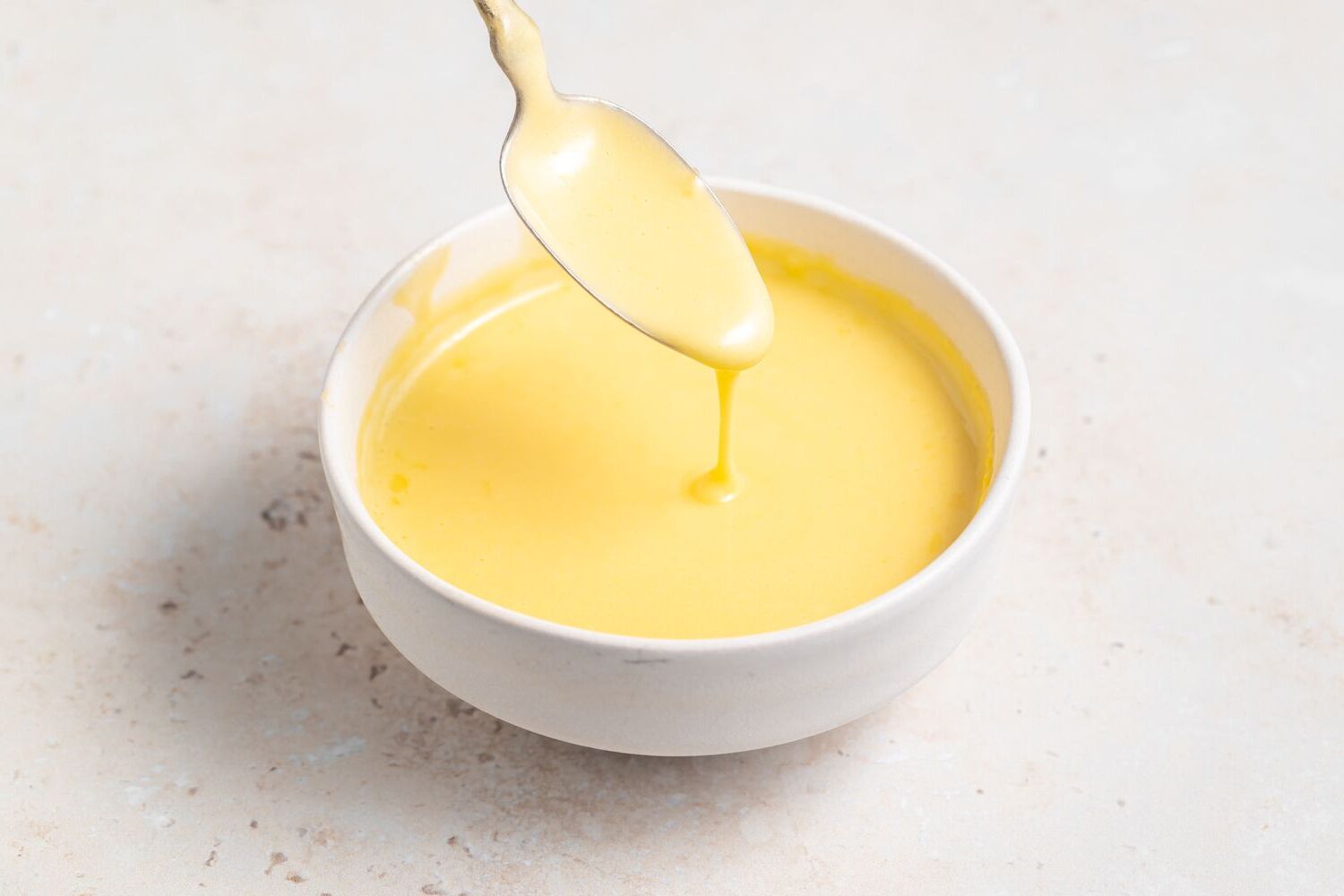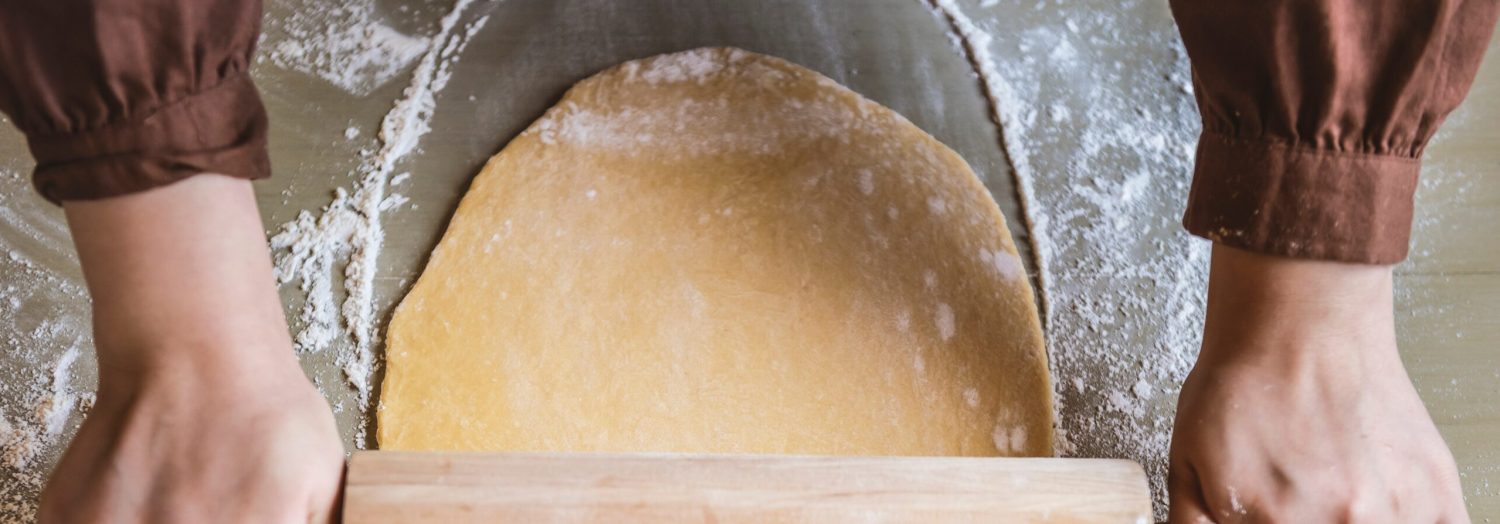Hollandaise sauce is a classic French sauce known for its rich, creamy texture and tangy flavor. It's a perfect accompaniment to dishes like eggs Benedict, steamed vegetables, and grilled fish. This sauce is made by emulsifying egg yolks with melted butter and lemon juice, creating a velvety smooth consistency that's simply irresistible.
While most of the ingredients for hollandaise sauce are common, you might need to pay special attention to cayenne pepper. This spice adds a subtle heat to the sauce and can usually be found in the spice aisle of your supermarket. Freshly squeezed lemon juice is also essential for the best flavor, so be sure to pick up a few fresh lemons.

Ingredients For Hollandaise Sauce Recipe
Egg yolks: The base of the sauce, providing richness and helping to emulsify the butter.
Lemon juice: Adds a bright, tangy flavor that balances the richness of the butter and egg yolks.
Melted butter: The primary fat component that gives the sauce its creamy texture.
Salt: Enhances the overall flavor of the sauce.
Cayenne pepper: Adds a subtle heat and depth of flavor to the sauce.
Technique Tip for This Recipe
When making hollandaise sauce, it is crucial to maintain a gentle heat. Too much heat can cause the egg yolks to scramble, resulting in a lumpy sauce. Use a double boiler to control the temperature and ensure even cooking. Whisk constantly to incorporate air and achieve a smooth, creamy texture. If the sauce starts to separate, add a few drops of warm water and whisk vigorously to bring it back together.
Suggested Side Dishes
Alternative Ingredients
egg yolks - Substitute with silken tofu: Silken tofu can mimic the creamy texture of egg yolks and is a good vegan alternative.
egg yolks - Substitute with Greek yogurt: Greek yogurt provides a similar consistency and adds a tangy flavor.
freshly squeezed lemon juice - Substitute with white wine vinegar: White wine vinegar offers a similar acidity and can be used in the same quantity.
freshly squeezed lemon juice - Substitute with lime juice: Lime juice has a comparable acidity and citrus flavor, making it a good alternative.
melted butter - Substitute with ghee: Ghee has a similar rich flavor and consistency as melted butter.
melted butter - Substitute with clarified butter: Clarified butter provides the same buttery flavor without the milk solids.
salt - Substitute with soy sauce: Soy sauce can add a salty and umami flavor, though it will also add a different color.
salt - Substitute with sea salt: Sea salt can be used in the same quantity and provides a similar salty taste.
cayenne pepper - Substitute with paprika: Paprika offers a milder heat and a slightly smoky flavor.
cayenne pepper - Substitute with hot sauce: A few drops of hot sauce can provide the heat and flavor needed.
Other Alternative Recipes Similar to This Sauce
How to Store or Freeze This Sauce
To store your hollandaise sauce, transfer it to an airtight container. Place a piece of plastic wrap directly on the surface of the sauce to prevent a skin from forming. Seal the container tightly and refrigerate. It will keep for up to two days.
When you're ready to use the stored hollandaise sauce, gently reheat it. Place the container in a bowl of warm water and stir occasionally until it reaches the desired temperature. Avoid direct heat as it can cause the sauce to separate.
For freezing, pour the hollandaise sauce into a freezer-safe container, leaving some space at the top for expansion. Cover the surface with plastic wrap and seal the container. Label it with the date and freeze for up to one month.
To thaw frozen hollandaise sauce, transfer it to the refrigerator and let it thaw overnight. Once thawed, reheat gently using the same method as for refrigerated sauce. Stir continuously to maintain a smooth texture.
If the sauce separates during reheating, don't panic. Whisk in a few drops of warm water or lemon juice to bring it back together. This will help restore its creamy consistency.
For best results, avoid microwaving hollandaise sauce directly, as the high heat can cause it to break. Instead, use gentle, indirect heat to maintain its delicate texture and flavor.
Always check the sauce for any signs of spoilage before using. If it has an off smell, unusual color, or texture, it's best to discard it and make a fresh batch.
How to Reheat Leftovers
- Gently reheat the hollandaise sauce using a double boiler. Place the sauce in a heatproof bowl over simmering water, whisking constantly until warmed through. This method prevents the sauce from curdling or separating.
- Alternatively, use a microwave with caution. Transfer the hollandaise sauce to a microwave-safe bowl. Heat on low power in 15-second intervals, stirring between each interval until the sauce is warm. Be careful not to overheat, as this can cause the sauce to break.
- For a stovetop method, place the hollandaise sauce in a small saucepan over very low heat. Stir continuously with a whisk until the sauce is warmed through. This method requires close attention to avoid overheating.
- If the hollandaise sauce has thickened too much, whisk in a small amount of warm water or lemon juice to restore its smooth consistency while reheating.
Best Tools for Making This Sauce
Double boiler: A two-part cooking vessel where the top part holds the ingredients and the bottom part holds simmering water, ensuring gentle and even heating.
Whisk: A kitchen utensil used to beat or stir ingredients smoothly and incorporate air into the mixture.
Small bowl: Used to hold and whisk together the egg yolks, lemon juice, water, and salt before transferring to the double boiler.
Measuring spoons: Essential for accurately measuring the lemon juice, salt, and cayenne pepper.
Saucepan: Used to melt the butter before it is slowly drizzled into the egg mixture.
Heatproof spatula: Useful for scraping down the sides of the bowl to ensure all ingredients are well incorporated.
Ladle: Handy for drizzling the melted butter into the egg mixture in a controlled manner.
Thermometer: Optional but helpful to ensure the sauce stays at the right temperature and doesn’t overheat.
Serving dish: Used to serve the finished hollandaise sauce or to keep it warm over hot water until ready to serve.
How to Save Time on Making This Sauce
Use a blender: Combine egg yolks, lemon juice, and melted butter in a blender for a quick and easy hollandaise sauce.
Pre-melt butter: Melt the butter in advance and keep it warm to save time during the mixing process.
Room temperature ingredients: Ensure all ingredients are at room temperature to help the sauce emulsify faster.
Simmering water: Keep the water at a gentle simmer to prevent the egg yolks from cooking too quickly.
Whisk constantly: Continuous whisking helps the sauce thicken evenly and prevents lumps.

Hollandaise Sauce Recipe
Ingredients
Main Ingredients
- 3 pieces Egg yolks
- 1 tablespoon Lemon juice freshly squeezed
- ½ cup Butter melted
- 1 pinch Salt
- 1 pinch Cayenne pepper
Instructions
- 1. In the top of a double boiler, whisk together egg yolks, lemon juice, water, and salt.
- 2. Place over simmering water and continue to whisk until mixture begins to thicken.
- 3. Slowly drizzle in melted butter while whisking constantly until sauce is thickened and smooth.
- 4. Remove from heat and whisk in cayenne pepper.
- 5. Serve immediately or keep warm over hot water until ready to serve.
Nutritional Value
Keywords
More Amazing Recipes to Try 🙂
- Red Potato Salad Recipe35 Minutes
- Roasted Chicken Recipe1 Hours 15 Minutes
- Cream of Mushroom Soup Recipe45 Minutes
- Italian Dressing Recipe10 Minutes
- Japanese Tamago Egg Recipe20 Minutes
- Pan-Fried Blackened Red Snapper Recipe25 Minutes
- Screwdriver Cocktail Recipe5 Minutes
- White Cake Recipe45 Minutes

Leave a Reply